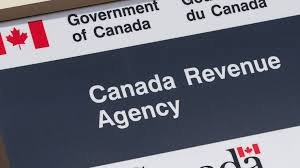Canada’s tax system uses marginal tax brackets, meaning different portions of your income are taxed at different rates.
For 2025, the federal brackets and rates have been adjusted for inflation, and a planned cut to the lowest bracket will take effect mid-year.
What are the 2025 federal tax brackets and rates?
For 2025, the Canada Revenue Agency confirms the following federal income tax brackets and marginal rates apply to taxable income (after deductions, credits, etc.).
| Taxable Income Bracket | Marginal Rate (First Half of 2025) | Marginal Rate (After July 1, 2025) |
| Up to $57,375 | 15.00 % | 14.00 % (effective) |
| Over $57,375 up to $114,750 | 20.50 % | 20.50 % |
| Over $114,750 up to $177,882 | 26.00 % | 26.00 % |
| Over $177,882 up to $253,414 | 29.00 % | 29.00 % |
| Over $253,414 | 33.00 % | 33.00 % |
Because the 1 % cut of the lowest rate begins July 1, 2025, the full-year effective lowest marginal rate for 2025 is projected to be 14.5 % (a blend of 15 % for the first half and 14 % for the second half) for income in the first bracket.
Why is the lowest bracket rate being reduced?
On May 27, 2025, the federal government introduced a legislative motion to reduce the lowest marginal tax rate from 15 % to 14 %, beginning July 1, 2025.
This change is intended to provide tax relief to middle-income Canadians.
The indexing of tax credits and thresholds for 2025 already reflects inflation adjustments of 2.7%.
Because the cut happens mid-year, payroll withholding tables will use the 14 % rate for the second half of the year.
How do federal tax brackets interact with provincial / territorial taxes?
The amounts above are federal only. In Canada, each province or territory applies its own tax rates and brackets in addition to the federal tax.
For example, in British Columbia, the 2025 provincial brackets are:
- 5.06 % on first $49,279
- 7.70 % next bracket
- 10.50 %, 12.29 %, 14.70 %, 16.80 %, and 20.50 % in higher ranges
So when calculating your total tax, you stack federal + provincial margins on your different income slices.
What are the “constant K” values in payroll tables?
In CRA’s payroll deduction formulas, each tax bracket is associated with a “constant” (K), a number used to simplify withholding calculations.
For 2025, the January to June 30 tables for Ontario show:
- K = 0 for first bracket
- K = $3,156 for the second bracket (over $57,375)
- K = $9,467 for the third
- K = $14,803 for the fourth
- K = $24,940 for the top bracket
These constants simplify the formula: tax = (taxable income × rate) – K.
How do these changes affect average Canadian taxpayers?
Here are a few implications:
- Taxpayers with income in the lowest bracket (up to $57,375) will benefit most from the rate cut.
- Because the cut takes effect July 1, new withholding tables reduce tax withheld for the remainder of the year.
- The personal (basic) amount — the income portion that’s not taxed — is also indexed upward. In 2025, the maximum basic personal amount is $16,129.
- For higher income brackets, the rates remain unchanged from their 2024 levels.




